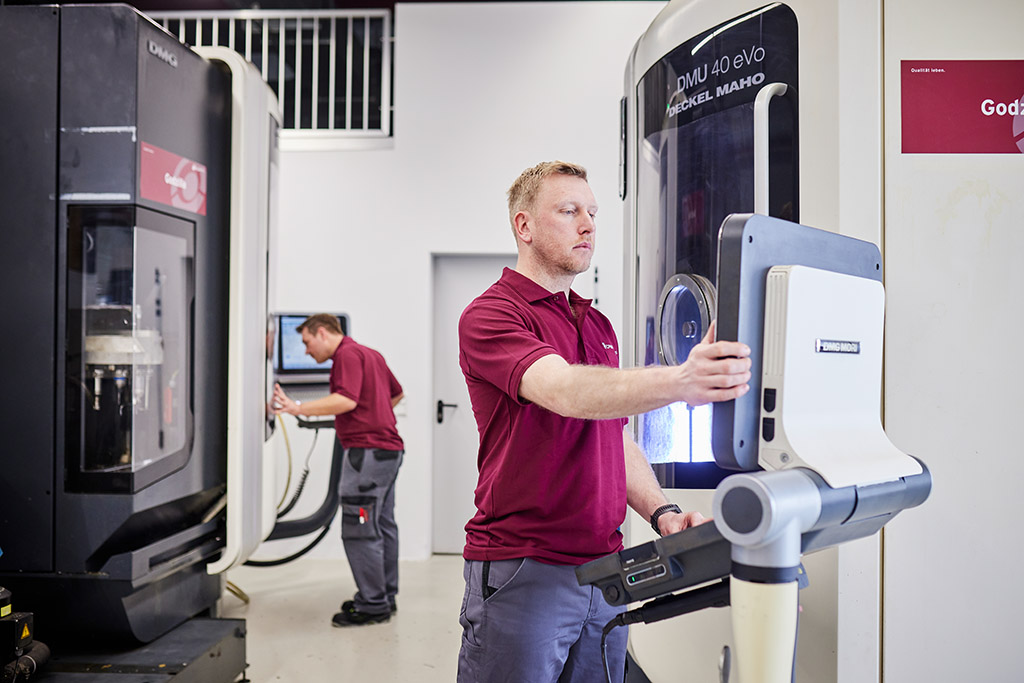

Find out more about our services that go far beyond traditional production. Find out more about Finishing, Packaging and dispatch.
What is the difference between machining with a geometrically defined cutting edge and a geometrically indeterminate cutting edge?
When machining with a geometrically defined cutting edge, the cutting edge is – as the name suggests – geometrically defined, or in other words: The shape of the cutting edge is clearly defined. This is invariably the case with turning tools, milling cutters or drills, for instance.
On the other hand, the “cutting edge” is never precisely defined when machining with an indeterminate cutting edge. Tailstock centers for example, are never precisely geometrically defined, as each tailstock center exhibits a different shape. Examples of machining with an indeterminate cutting edge are: Grinding, honing, lapping or blasting.
Why can titanium cause problems during machining?
There are several factors responsible for titanium’s poor machinability:
- Titanium has relatively poor thermal conductivity, which leads to high temperatures and can therefore significantly increase tool wear.
- The high strength of titanium means that more energy is required for machining. In addition, titanium retains this property even at high temperatures and does not lose this property (as with steel, for example).
- Titanium tends to deform rather than be cut. This quickly results in built-up edges or unwanted burrs on the subsequent component. This requires tools with very sharp cutting edges.
But these potential problems pose no challenge for our highly trained machining specialists. Due to our many years of experience and expertise, they know exactly what to look out for and how to process this material in the best possible way.
What is the difference between short and long turning?
The main difference between short and long turning is the way in which the material is held and processed. In short tuning, the raw material is held firmly in a clamping element with a “fixed” headstock, which cannot move in the axial direction, and the turning tool executes the movement and engages with the workpiece. The contour is therefore created by the movement of the turning tool. This allows workpieces to be produced with a low length-to-diameter ratio.
In long turning, the starting material is held in a “movable” headstock by means of a clamping element – in contrast to a short turning machine. A guide bush is also integrated which supports and guides the starting material, which is positioned just before the turning tool. This means that the distance from the guide bush to the turning tool can always be kept the same regardless of the component length, especially for long components. This enables the production of both long and short components with small diameters and consistently good surface quality and precision.
What is CAD/CAM programming?
CAD/CAM programming differs significantly from conventional machine programming. While each program line has to be written manually in conventional programming, the CAD/CAM program generates the program lines automatically.
This allows, for example, the programming of complex 5-axis simultaneous movements that a human could not program without the aid of computers. Moreover, this allows large quantities of different coordinates, for example for shapes beyond classical geometry, to be introduced into a program.
CAD/CAM programs are the modern standard, especially in milling technology. This is where multi-axis movements are very often implemented on 5-axis machines and where surfaces are milled that are geometrically difficult to define.